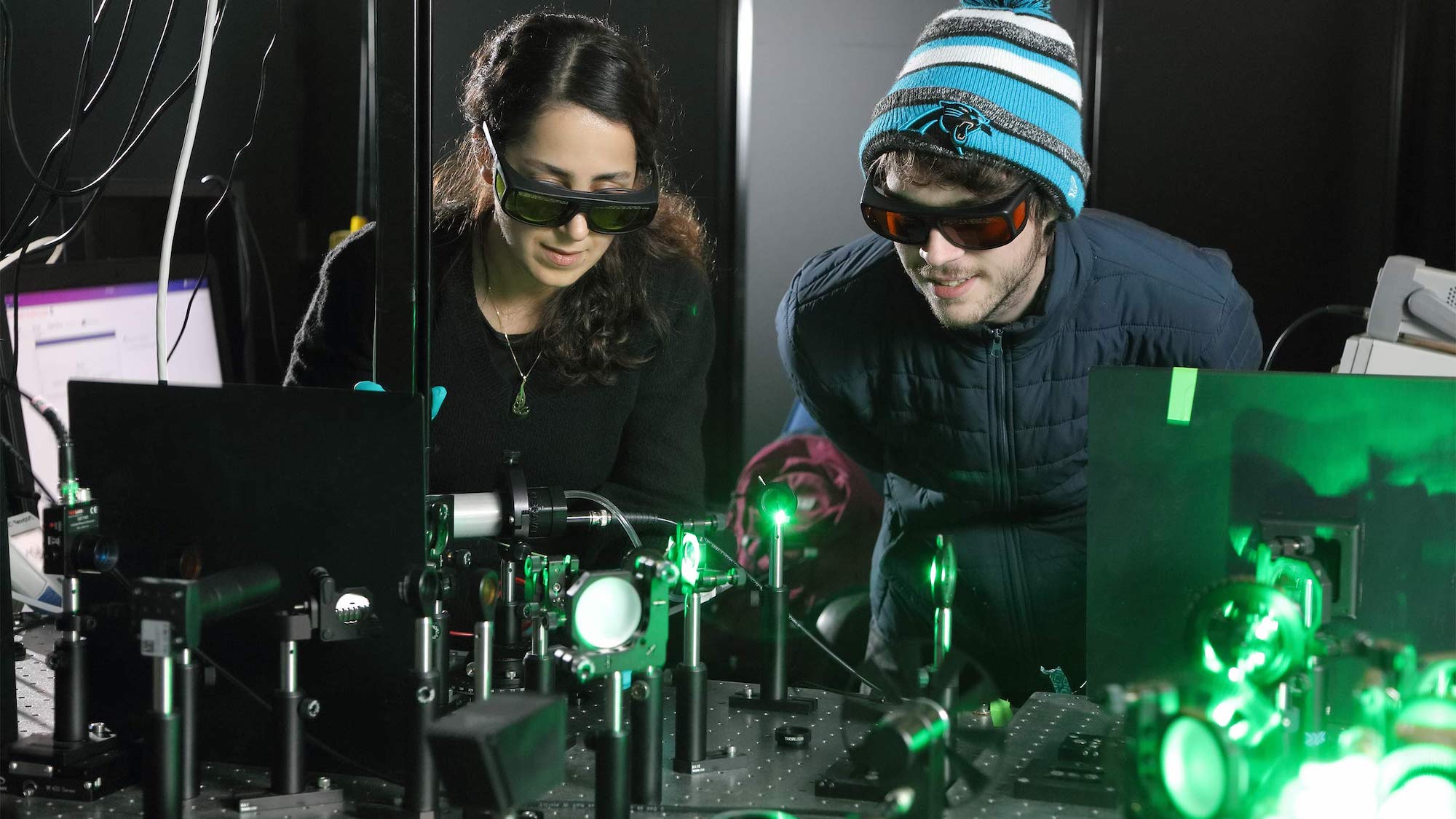

Earth’s air is often a decent, convenient coolant for military planes’ electronics systems, while ocean waters function similarly for naval ships. But neither source is exactly available the farther you get from the planet’s surface—say, the upper atmosphere and outer space, for example. There, it’s much more difficult to keep electronics at safe temperatures, given that coolant is heavy and takes up valuable onboard real estate. According to new findings recently published in ACS Nano, one potential aid could be found via harnessing plasma—ironically, the same matter that composes stars and lightning bolts.
Researchers at the University of Virginia’s Experiments and Simulations in Thermal Engineering (ExSITE) Lab have discovered an extremely promising, previously unrealized way to quickly cool down surfaces: plasma “freeze” rays.
[Related: Will future planes fly on wings of plasma?]
Using plasma to lower temperatures may seem counterintuitive—after all, plasma can easily heat to 45,000 degrees Fahrenheit, and higher—but according to mechanical and aerospace engineer Patrick Hopkins, shooting a focused jet of matter’s fourth state can offer some incredibly interesting thermodynamic results.
“What I specialize in is doing really, really fast and really, really small measurements of temperature,” Hopkins recently explained. “So when we turned on the plasma, we could measure temperature immediately where the plasma hit, then we could see how the surface changed.”
In their experiments, Hopkin’s team fired a purple jet of helium-generated plasma through a thin needle coated in ceramic onto a gold-plated target. They then measured the effects on the target’s surface using specialized, custom microscopic instruments, only to record some incredible results.
“We saw the surface cool first, then it would heat up,” said Hopkins.

After repeated tests and observations of the phenomenon, the team determined the plasma beam must be first striking a micro-thin layer of carbon and water molecules, which quickly evaporates the coating much like what happens when you air dry after getting out of a pool in the summer. Or, more simply, Hopkins is making the materials sweat.
“Evaporation of water molecules on the body requires energy; it takes energy from [the] body, and that’s why you feel cold,” said Hopkins. “In this case, the plasma rips off the absorbed [molecules], energy is released, and that’s what cools.”
Researchers measured a decrease in temperature as much as a few degrees for a few microseconds—perhaps unimpressive on a human scale, but such a difference could be extremely helpful in delicate, highly advanced electronics and instruments. Going forward, Hopkins’ team is experimenting with both various plasma gasses, as well as their impact on different materials like copper and semiconductors. Eventually, the researchers envision a time when robotic arm attachments can pinpoint hotspots in devices to cool via tiny plasma shots from an electrode.
“This plasma jet is like a laser beam; it’s like a lightning bolt,” said Hopkins. “It can be extremely localized.”
